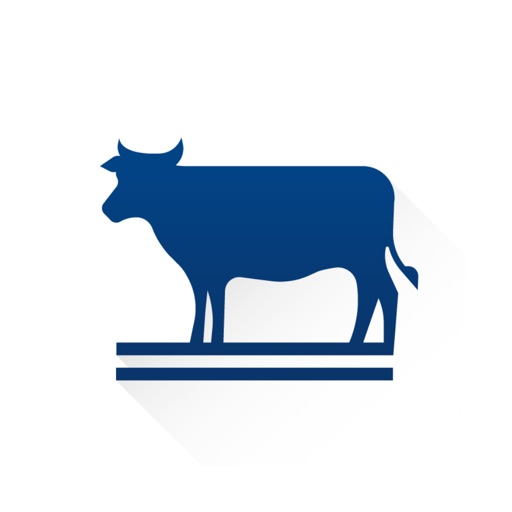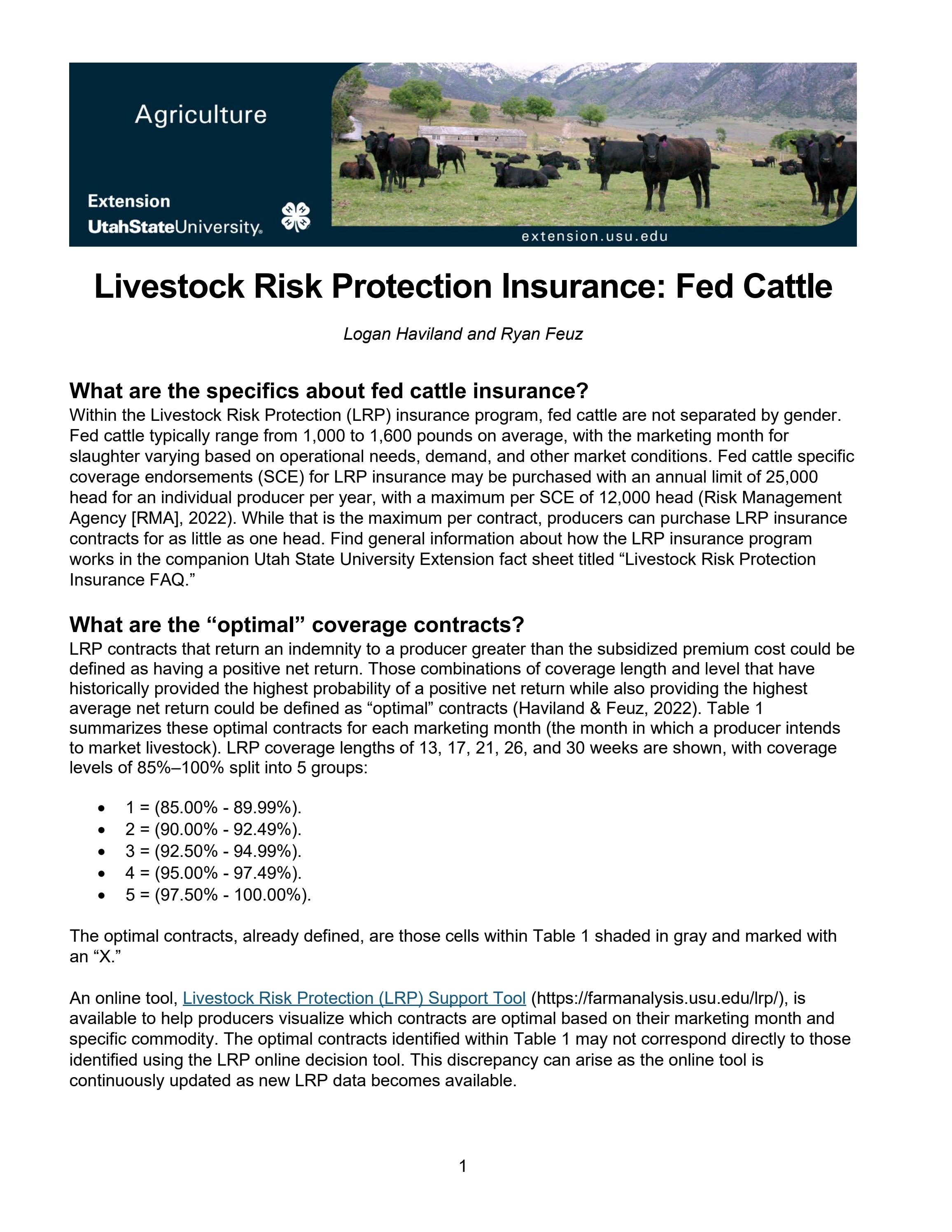Trick Factors to Think About When Finding Livestock Danger Defense (LRP) Insurance
When assessing choices for Animals Threat Protection (LRP) insurance coverage, numerous vital aspects require cautious factor to consider to guarantee efficient danger monitoring in the farming field. Choosing the right coverage alternatives tailored to your specific livestock operation is vital, as is recognizing just how premium costs correlate with the degree of security provided. Additionally, the eligibility criteria for different kinds of animals and the flexibility of the plan to adjust to altering scenarios are critical aspects to evaluate. Moreover, the performance and transparency of the cases procedure can substantially impact the overall experience and financial outcomes for animals producers. By strategically browsing these critical variables, manufacturers can guard their financial investments and alleviate possible risks efficiently.
Insurance Coverage Options
When taking into consideration Animals Threat Protection (LRP) insurance coverage, it is vital to understand the various protection choices readily available to mitigate risks in the agricultural market. Animals Threat Defense (LRP) insurance provides different coverage alternatives customized to satisfy the varied needs of animals producers. Bagley Risk Management. Among the primary protection alternatives is price protection, which shields against a decrease in market value. Producers can pick the protection degree that aligns with their cost danger administration goals, permitting them to safeguard their operations against possible monetary losses.
An additional crucial coverage alternative is the recommendation period, which determines the size of time the protection is in effect. Manufacturers can choose the endorsement duration that best suits their manufacturing cycle and market conditions. In addition, coverage degrees and rates vary based upon the type of animals being guaranteed, providing producers the flexibility to personalize their insurance policy plans according to their particular requirements.
Comprehending the different coverage choices available under Animals Threat Defense (LRP) insurance policy is important for producers to make informed decisions that successfully safeguard their livestock procedures from market unpredictabilities.
Premium Costs

Livestock Risk Protection (LRP) insurance offers vital protection alternatives customized to minimize dangers in the agricultural industry, with a considerable element to think about being the computation and structure of premium prices. These consist of the type and number of livestock being guaranteed, the coverage degree picked, the present market costs, historic rate information, and the length of the protection period.
Premium prices for LRP insurance policy are generally determined based upon actuarial information and risk evaluation versions. Insurance providers evaluate historical information on livestock rates and production prices to figure out an appropriate costs that reflects the level of threat involved. It is crucial for livestock manufacturers to thoroughly review premium costs and protection options to ensure they are adequately secured against prospective economic losses due to negative market conditions or unanticipated events. By recognizing how exceptional costs are computed and structured, manufacturers can make informed decisions when selecting the appropriate LRP insurance plan for their procedure.
Qualified Animals
The decision of eligible animals for Animals Threat Defense (LRP) insurance policy protection entails cautious factor to consider of certain standards and features. Animals kinds that are commonly qualified for LRP insurance policy consist of feeder livestock, fed lambs, cattle, and swine. These pets must meet certain credentials associated with weight varieties, age, and intended use. Furthermore, the eligibility of livestock might vary based upon the specific insurance policy service provider and the terms of the policy.
Feeder cattle, for example, are commonly qualified for LRP coverage if they drop within defined weight ranges. Lambs are an additional category of animals that can be considered for LRP insurance, with variables such as weight and age playing a critical function in establishing their qualification.
Before selecting LRP insurance policy for livestock, producers should meticulously assess the qualification requirements described by the insurance provider to guarantee their pets satisfy the required needs for insurance coverage.
Plan Versatility
Plan flexibility in Animals Risk Protection (LRP) insurance permits producers to tailor coverage to match their particular requirements and risk check here administration strategies. This versatility equips livestock manufacturers to personalize their insurance policy plans based on aspects such as the type of livestock they possess, market conditions, and private threat tolerance degrees. By offering adjustable alternatives, LRP insurance allows manufacturers to efficiently manage their threat exposure while securing their animals operations versus unforeseen market volatility.
Insurance Claims Refine
Upon experiencing a loss or damages, producers can start the insurance claims procedure for their Livestock Threat Defense (LRP) insurance coverage by without delay contacting their insurance policy supplier. It is crucial for manufacturers to report the loss as quickly as feasible to speed up the cases process. When reaching out to the insurance policy supplier, manufacturers will certainly need to offer thorough info regarding the occurrence, including the day, nature of the loss, and any type of pertinent documentation such as vet documents or market value.

After the assessment is full, the insurance coverage service provider will certainly choose pertaining to the insurance claim and connect the end result to the producer. The manufacturer will obtain payment according to the terms of their Livestock Threat Security (LRP) insurance policy if the case is approved. It is crucial for manufacturers to be accustomed to the claims process to make sure a smooth experience in case of a loss

Conclusion
Finally, when selecting Livestock Risk Protection (LRP) insurance policy, it is vital to consider More about the author coverage options, premium prices, qualified livestock, policy versatility, and the claims process. These key factors will certainly assist guarantee that ranchers and farmers are properly protected versus prospective risks and losses related to their animals operations. Making an educated choice based on these factors to consider can eventually lead to better monetary safety and security and linked here assurance for animals producers.
Animals Threat Security (LRP) insurance supplies different coverage alternatives tailored to fulfill the diverse demands of animals producers.The resolution of qualified livestock for Animals Risk Protection (LRP) insurance policy coverage involves mindful factor to consider of certain criteria and features.Policy flexibility in Livestock Threat Security (LRP) insurance enables producers to customize coverage to match their particular demands and run the risk of management strategies.Upon experiencing a loss or damages, manufacturers can start the insurance claims process for their Livestock Danger Security (LRP) insurance coverage by promptly contacting their insurance policy supplier.In conclusion, when picking Animals Danger Defense (LRP) insurance, it is crucial to think about insurance coverage choices, premium prices, eligible livestock, plan versatility, and the claims process.